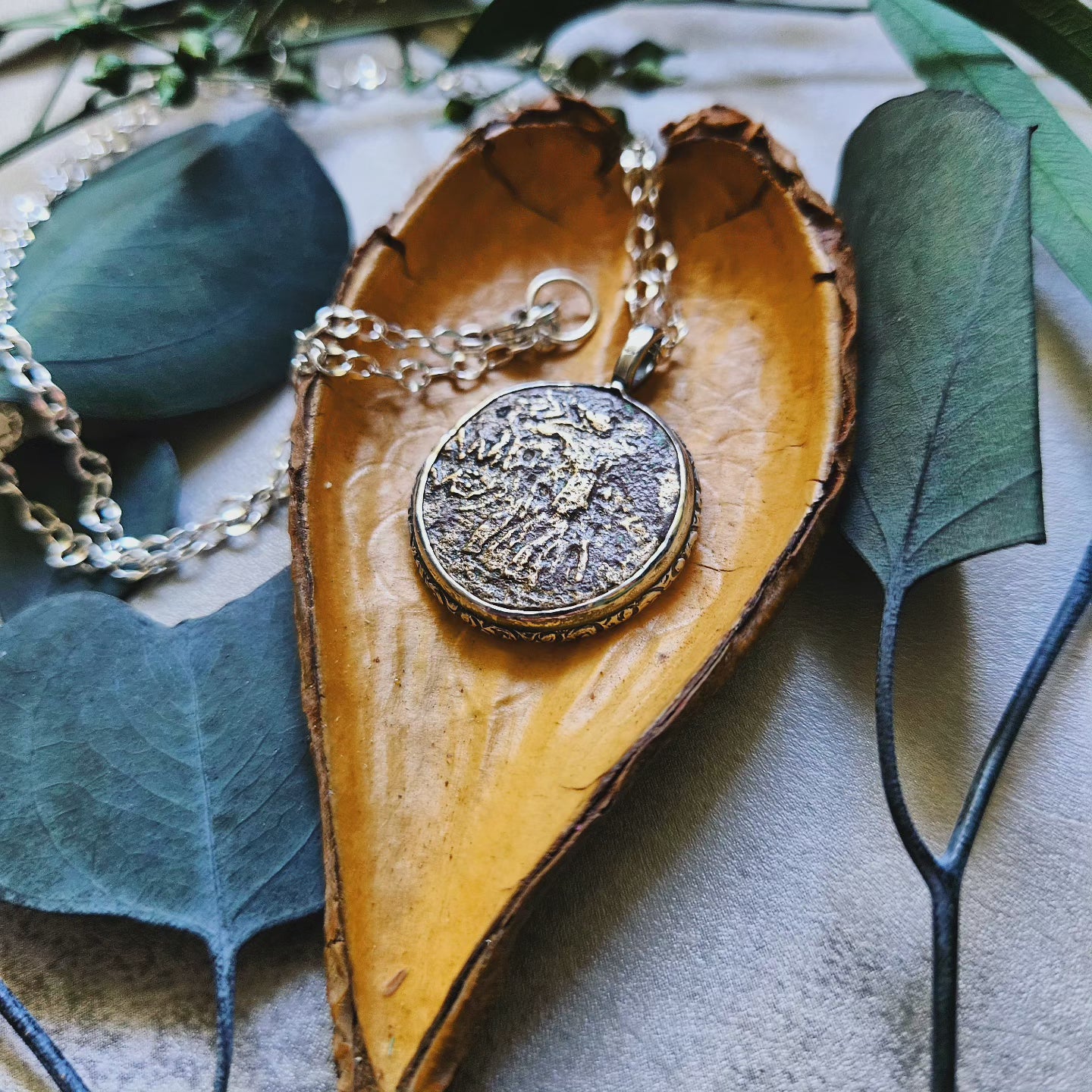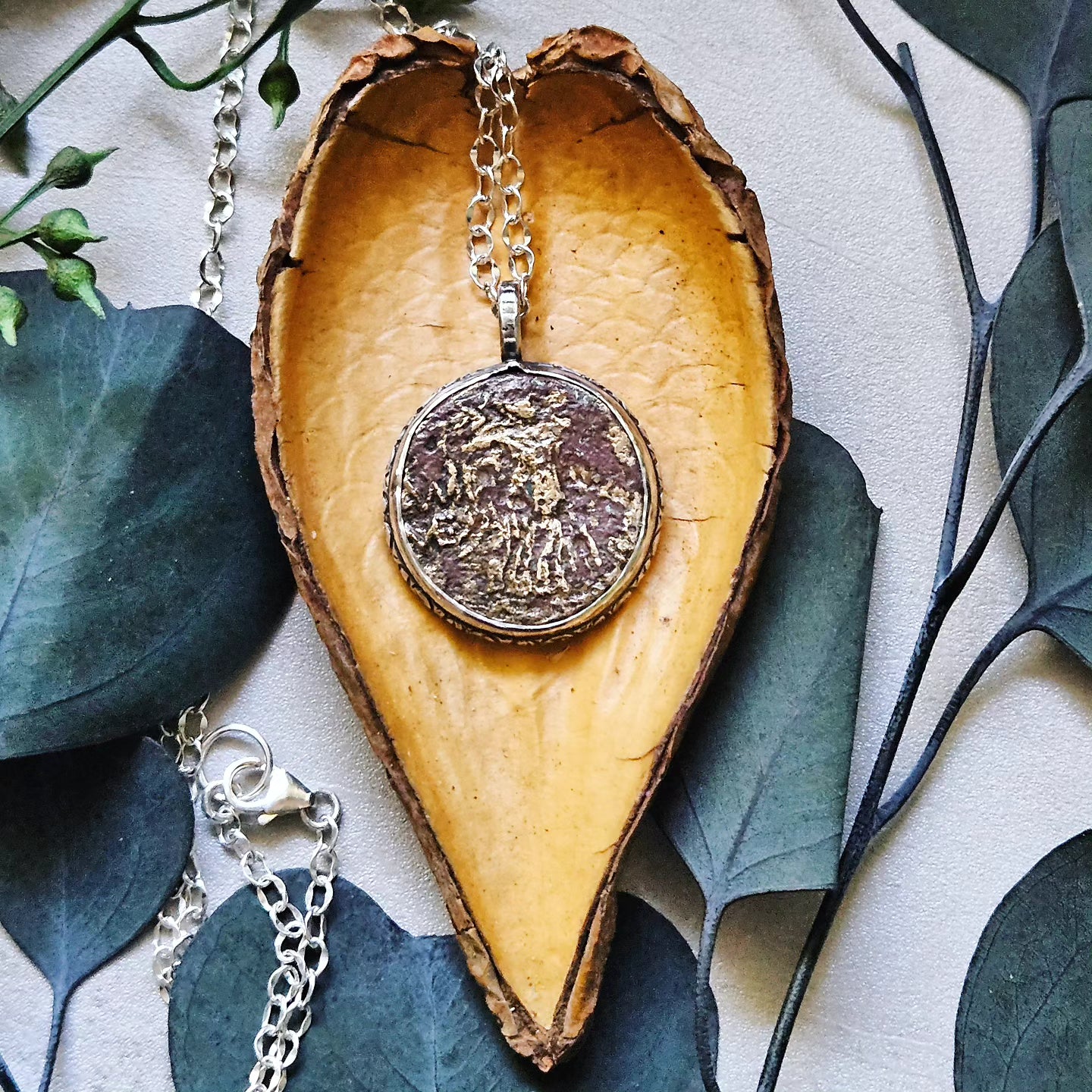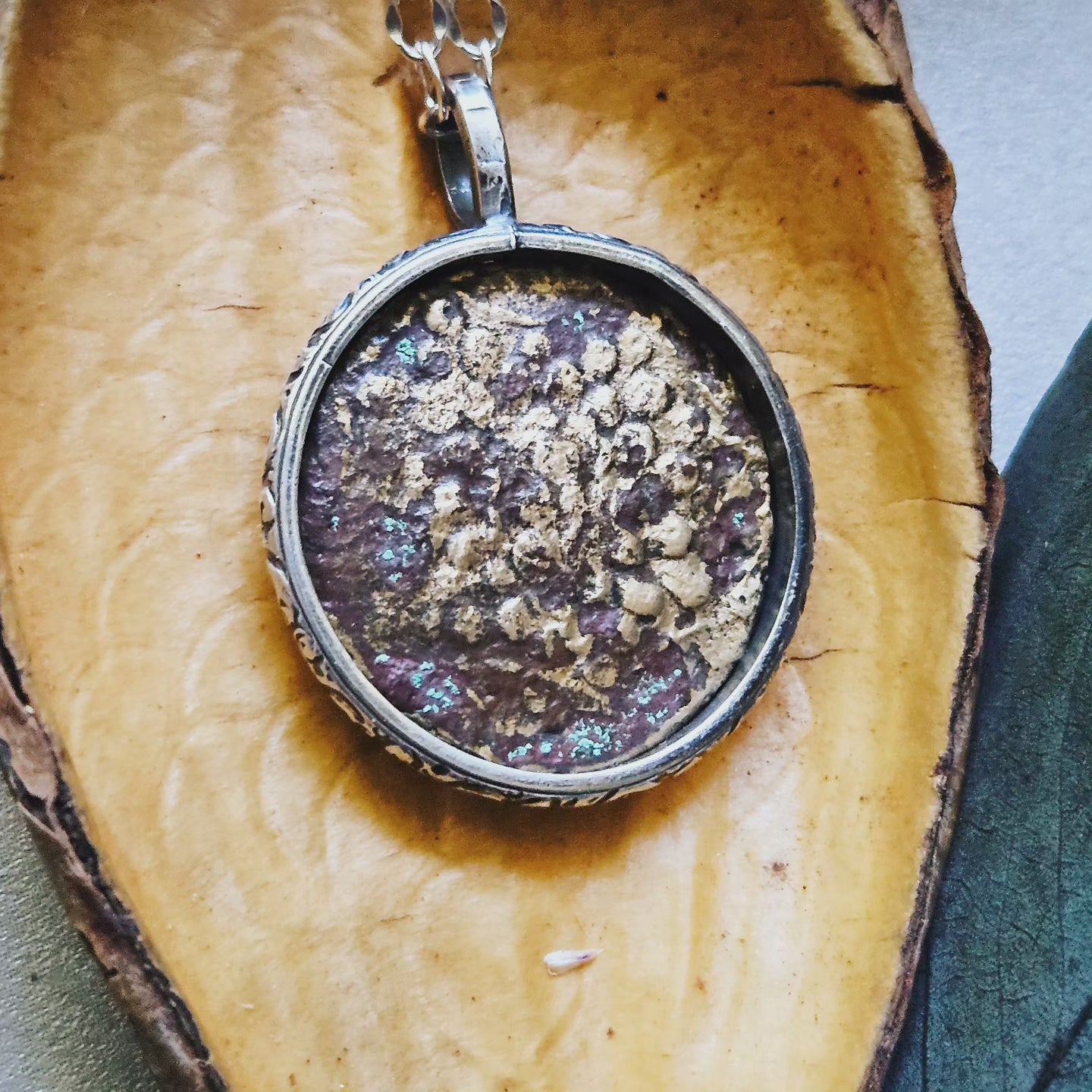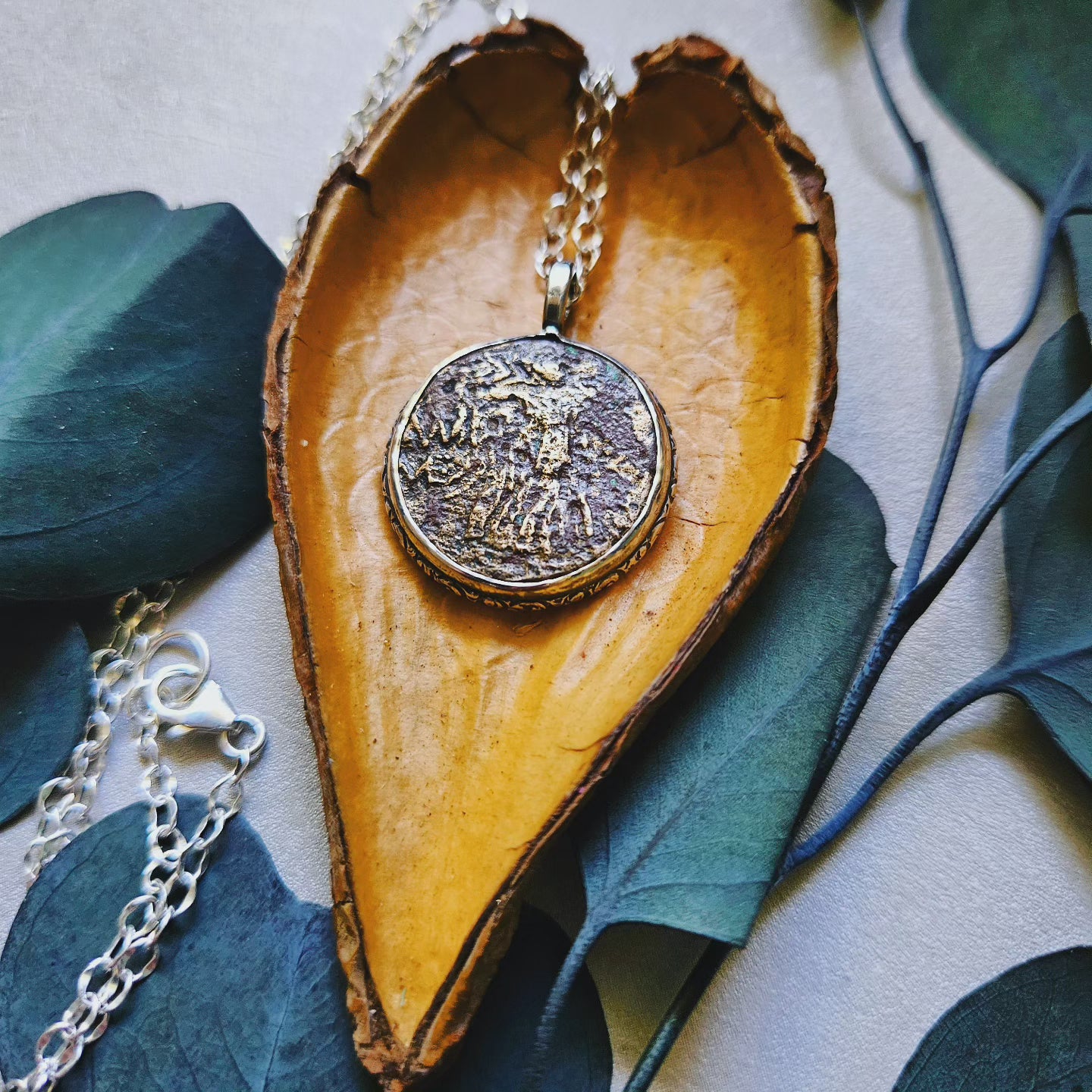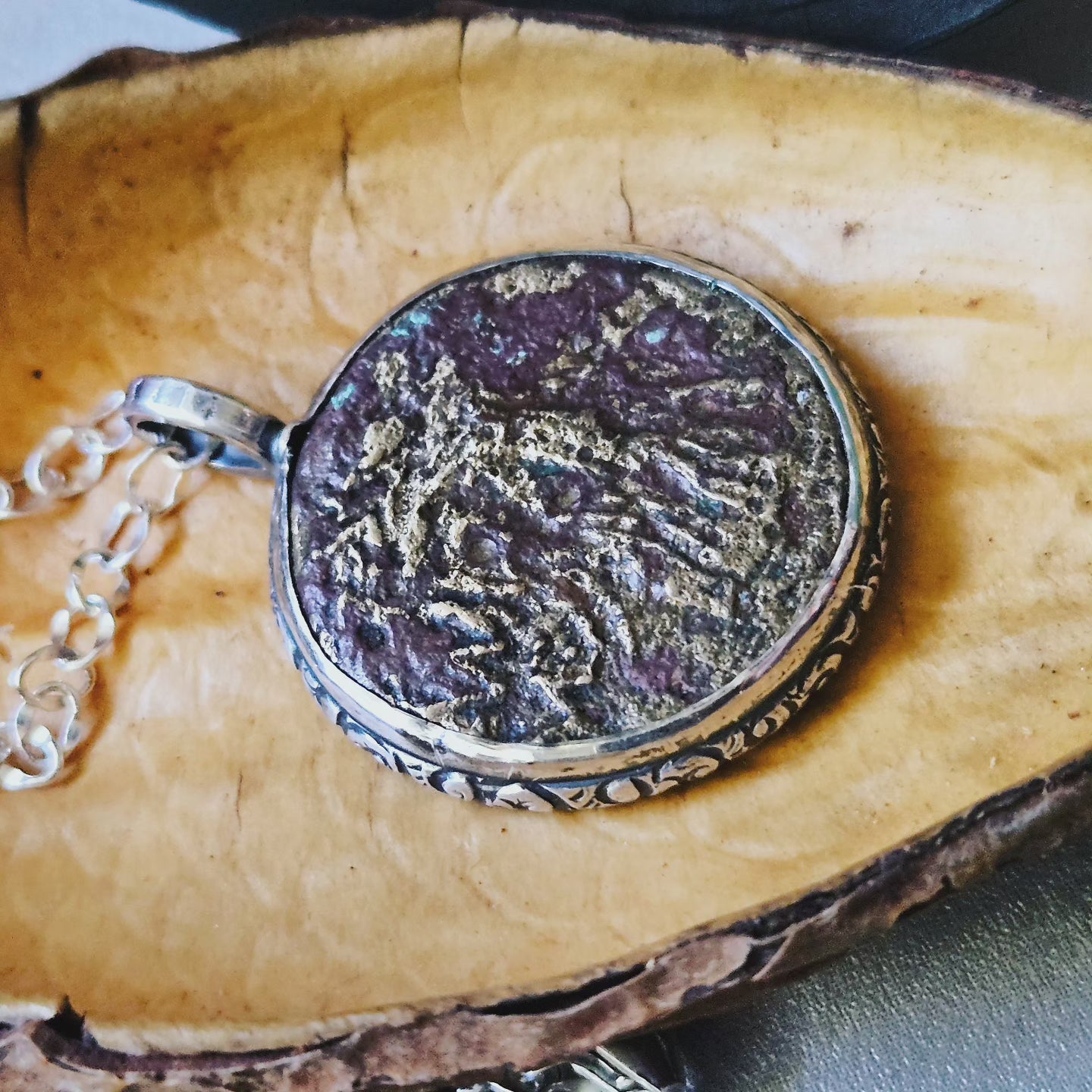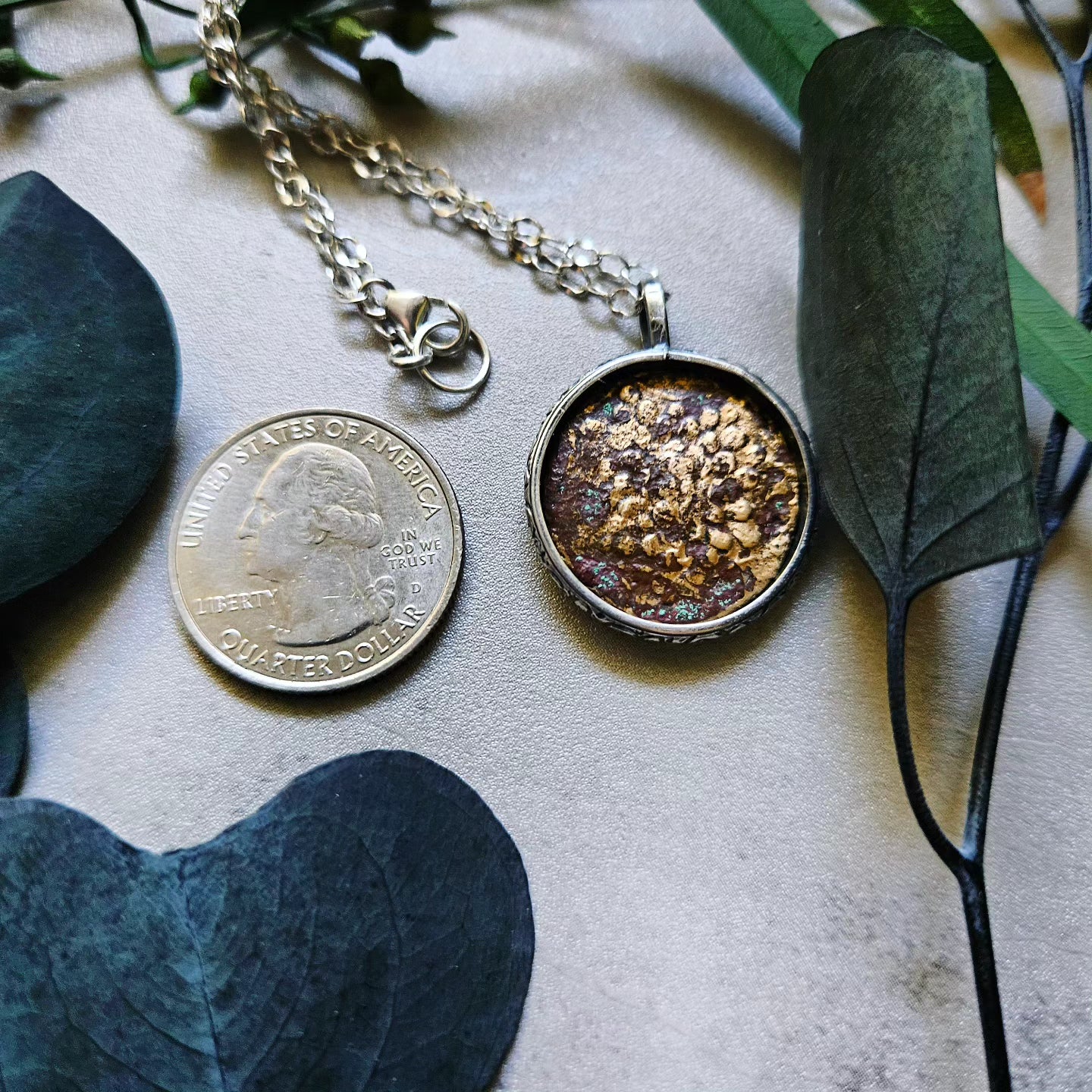Murdoch's Method
"It's All Greek To Me": Ancient Greece Coin Necklace (Nike/Gorgon)
"It's All Greek To Me": Ancient Greece Coin Necklace (Nike/Gorgon)
Couldn't load pickup availability
*Note: These coins are identified to the best of my ability using any letters/symbols that are visibly available, and searching against a numismatic database. Please note that while I try incredibly hard to correctly identify them, I am just a hobbyist -- not an expert. Each coin is hand cleaned by me in a process that takes months of soaking, toothpicking, and toothbrushing. Colorization is natural patina from old age that is valued by coin collectors, and I have protected it with Renaissance wax. Because these coins are around 2000 years old and spend hundreds of years buried in the ground, there will be imperfections in surface, patina, and shape.
Materials in Bezel/Bail/Chain: Sterling Silver
Chain and Closure: 20", lobster claw closure with small jump ring
Specific Coin Identification:
Obverse: Nike with Palm Frond
Reverse: Gorgon on an Aegis (a shield)
Mint Date: 120-65 BCE. This coin is ~2100 years old.
Mint Location: Amisas
Story time!:
MEDUSA/NIKE
This coin was struck in the Amisos kingdom/pontos of Ancient Greece (modern day Samsun, Turkey), around 90 BCE.
This was under the reign of Mithradates VI Eupator, who was a HUGE thorn in the burgeoning Roman Republic's side. Rulers of both sides wanted to control Asia Minor and trade routes along to Black Sea. Ultimately Rome took control, but Mithridates definitely gave them a run for their money, no pun intended.
Mithridates was pretty much the Alexander the Great of his day, and UNLIKE the Roman Republic, he was hugely accepting of those from Hellenistic and Asiatic backgrounds. Hence, the Hellenistic imagery in his coin! He was promoting his acceptance around the world. His empire thrived under his rule, and he became a protector of the Greek cities along the Black Sea. the Roman Republic was, however, inevitable.
Also he did interesting stuff like building poison resistance by microdosing, and to this day the act is still named after him. He was also an amazing polyglot and spoke all 22 languages of the people he ruled over.
Perseus/Medusa imagery was wildly popular around this time. On the front of the coin, it shows the goddess Nike (presumably to market some victory over the Romans). On the back, it shows the head of a gorgon, likely Medusa, in a shield. Yes, I know Medusa looks like grapes -- believe me, it took me FOREVER to identify this one. Her head is just in flower-lime petals.
The nice thing is you can way this pendant to show off either side!
Materials
Materials
Dimensions
Dimensions
Care information
Care information
